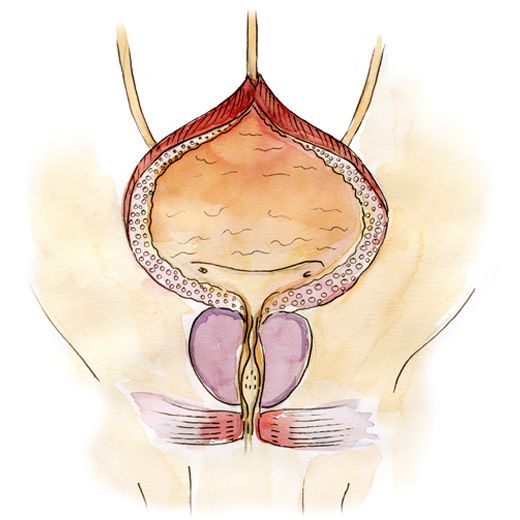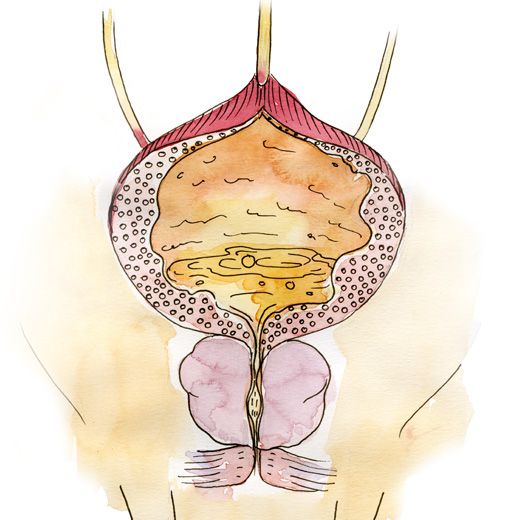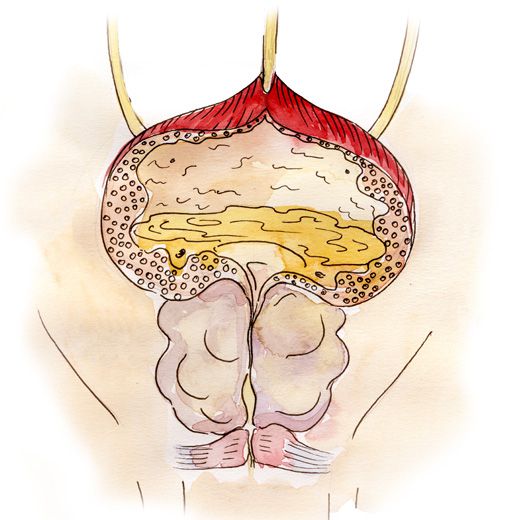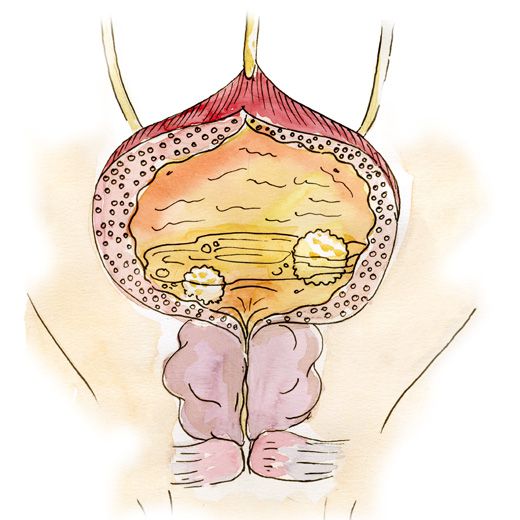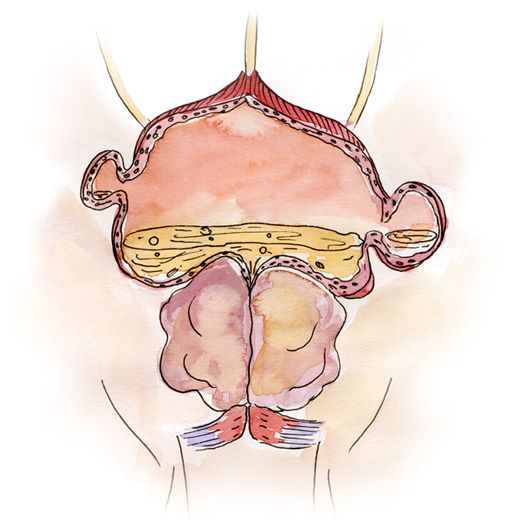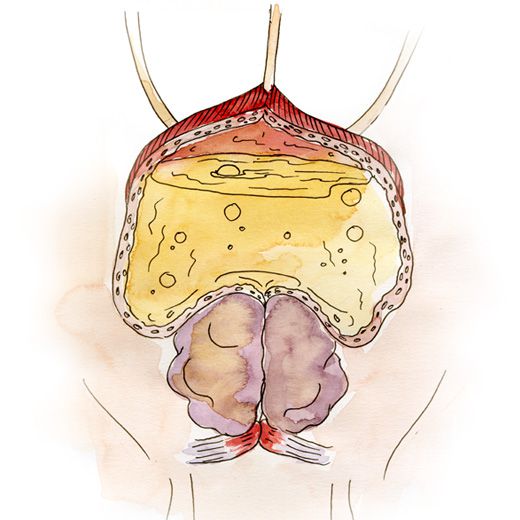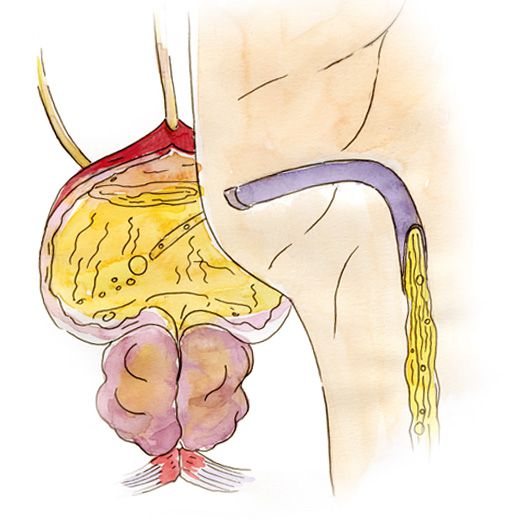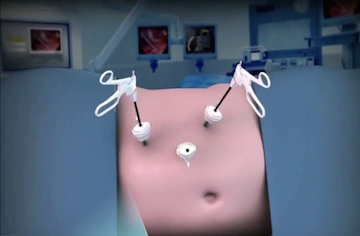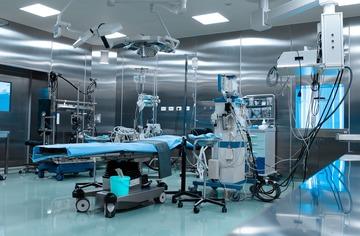Stages of Benign Prostatic Hyperplasia
Can benign prostatic hyperplasia be cured? Modern treatment of benign prostatic hyperplasia depends on correctly identifying the stage of the disease. While the first stage can be treated with medication the second and third stages will require surgical intervention.
Stages of benign prostatic hyperplasia
Like any other chronic illness benign prostatic hyperplasia develops slowly, quietly leading to complications. In the majority of cases men come to us due to complications of benign prostatic hyperplasia.
1st stage of benign prostatic hyperplasia is characterised by minor disruptions to urinary flow such as weak flow, frequent urge to urinate and need to urinate at night.
2nd stage of benign prostatic hyperplasia causes further complications: the bladder does not fully empty due to the narrowing of the urethra and the patient can feel that the bladder is not quite emptying, experiences frequent urge to urinate with very small amounts of urine coming out and involuntary urine flow. Two of the worst complications, acute urinary retention and impaired kidney function can already be seen in the second stage of benign prostatic hyperplasia.
What are the dangers of benign prostatic hyperplasia?
The most dangerous stage is the 3rd stage of benign prostatic hyperplasia: the bladder wall is thinned by this point and the bladder has nearly lost its ability to contract. The kidneys are also suffering because the urine is unable to exit the body properly, the ureters get wider and the increased urine pressure damages the kidneys.
Cloudy urine in the 3rd. stage is due to the presence of underlying infections. Bacteria actively multiply in the stagnating urine and damage not only the bladder and the prostate but also the kidneys, causing the development of chronic pyelonephritis.
Sometimes there is blood present in the urine but this is only half of the problem. Usually at this stage acute urinary retention results in having to use suprapubic urinary catheter – a draining tube that is inserted into the bladder through the abdominal wall.
Can benign prostatic hyperplasia become cancerous?
...And how often does it turn into cancer? These are the questions asked frequently by the patients. It is known that prostate cancer is not part of any stage of benign prostatic hyperplasia and these conditions are completely separate from one another. But at the same time these two conditions can co-exist and develop parallel to each other. This is why we pay extra attention to raised levels of PSA in the presence of benign prostatic hyperplasia and, following the recommendations of European Association of Urology, we aim to confirm the diagnosis by performing a prostate biopsy.
Benign prostatic hyperplasia and prostate cancer: There is a huge difference between the two but they can co-exist making the treatment more difficult.
-Master, what is your dream?
- To get a good night’s sleep and to urinate to my heart’s content at least once…
Benign prostatic hyperplasia in the 1st stage: description and treatment
The early stages of benign prostatic hyperplasia present a big problem for young men. The problem is that complaints about frequent urination, having to get up at night to go to the toilet and occasional weak flow of urine are often mistaken for chronic prostatitis. And so the treatment begins: prostate massage, herbal medicines, physiotherapy etc. This can go on for several years and a lot of money can be spent on all this. The name “chronic prostatitis” suggests “chronic” treatment and the patient finds himself in the physiotherapist’s office once every six months without fail.
Why does this happen? Because the cause of this “chronic prostatitis” never gets addressed because all of the above methods are not suitable for treating the early stages of the disease.
It is important to know and understand that once benign prostatic hyperplasia nodes had developed in the prostate it will compress the organ and block the flow of the secretions. In this situation no anti-inflammatory pill or “magic device” are able to completely get rid of “chronic prostatitis”.
This is why the above symptoms require diagnosis of benign prostatic hyperplasia, because appropriate treatment of benign prostatic hyperplasia in the first stage will help avoid complications and problems associated with… “chronic prostatitis”.
-We don’t cut, we operate. And often even without using a scalpel.”
Benign prostatic hyperplasia in the 2nd stage: surgery
The 2nd stage of benign prostatic hyperplasia is already considered a complicated stage of the disease. Some of the symptoms make the patient’s life a living hell. Constant sleep interruptions due to having to get up to urinate at night are the source of constant stress. This results in chronic fatigue and anxiety; the patient becomes irritable and this in turn affects both their productiveness at work and their interpersonal relationships with their family and friends. The need to strain when urinating leads to groin hernias and these require surgical intervention. Involuntary dripping of urine due to urinary retention which starts in the 2nd and 3rd stages of the disease seriously affects the patient’s quality of life due to the constant smell of urine.
Acute urinary retention, when the patient strains but is unable to squeeze out any urine is accompanied by pain and urge to urinate and can lead to hospitalisation and the need to insert a tube into the bladder via the abdominal wall.
This is why benign prostatic hyperplasia in the 2nd stage requires surgical treatment: the risk of complications is simply too high.
The comparison of complications of benign prostatic hyperplasia in the 2nd and 3rd stages with modern surgical treatment definitely favours the latter.
Just think: modern surgical treatment of benign prostatic hyperplasia in the second stage is an endoscopic procedure and does not involve any cuts, risk of bleeding or a long hospital stay.
We offer our patients the whole range of possibilities of minimally invasive surgery such as bipolar TURP, plasma vaporization and laser enucleation. The chosen method depends not just on the stage of the disease but also on the presence of any underlying conditions. Based on complete diagnostics procedures we offer each patient the most suitable option.
Dr House
Benign prostatic hyperplasia in the 3rd stage: treatment and prognosis
In its 3rd stage this “male” disease is characterised by large volume of retained urine, weakening and atrophy of the bladder wall, widening of the ureters and impaired kidney function.
What does all this mean? Ok, so there is some retained urine, and the bladder wall is thinner and the ureters are wider, what are the dangers?
The prognosis in the presence of benign prostatic hyperplasia in the 3rd stage is not at all great: renal failure can be fatal.
The presence of retained urine constitutes a near 100% risk of infection as when urine is stagnating the bacteria simply do not get washed out during urination. High pressure within the bladder disrupts urine flow from the kidneys: first the ureters get wider causing the urine pressure in the kidneys which in turn disrupts kidney function.
Chronic renal failure when the kidneys lose the ability to clean the blood is a very serious complication. This is why disruption of urinary flow in the presence of benign prostatic hyperplasia calls for surgical treatment.
-It depends what you mean by “good”. The chairs are comfortable...
Dr House
Professional approach: We are a specialised centre for endourology and offer our patients the whole range of modern and safe surgical treatment options for all stages of benign prostatic hyperplasia.
Our equipment: Our equipment and our experience allow us to perform surgical procedures even in the presence of complications. The options include bipolar TURP, laser enucleation, plasma vaporization and laparoscopic surgery.
Board of doctors: Our experienced team of anaesthetists allows us to take on patients which are rejected by ordinary hospitals and refused treatment for benign prostatic hyperplasia due to underlying conditions or advancing age.
Comfort: And our chairs are comfortable too :-)


